Photos: Math Meets Art in NYC Exhibition
Former hedge fund manager Nelson Saiers recently left the finance world for the art world. The self-proclaimed math nerd's artwork combines a deep appreciation for mathematics and science with an understanding of the societal issues that plague the world. His first exhibition, called "Blindfolded in Gravity's Shadow," will be on display at Studio Vendome in New York City from Nov. 5 to Dec. 1, 2014. Check out some of the work featured in Saier's show, courtesy of the artist. [Read full story about the art exhibit]
Love is Blind
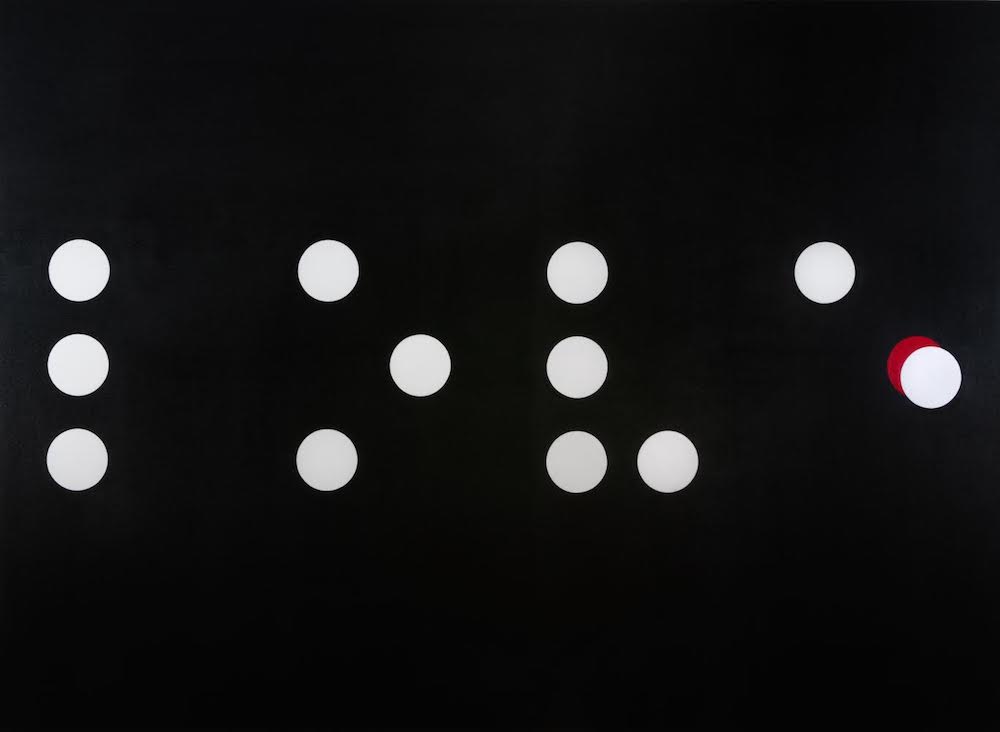
This painting, called "Love is Blind," is about accepting people even when you see their imperfections, according to Saiers. Here, a white circle that completes the symbol for love tries to cover up the imperfect red spot — a depiction of what the artist called "perfect love."
Prime Example of Narcissism
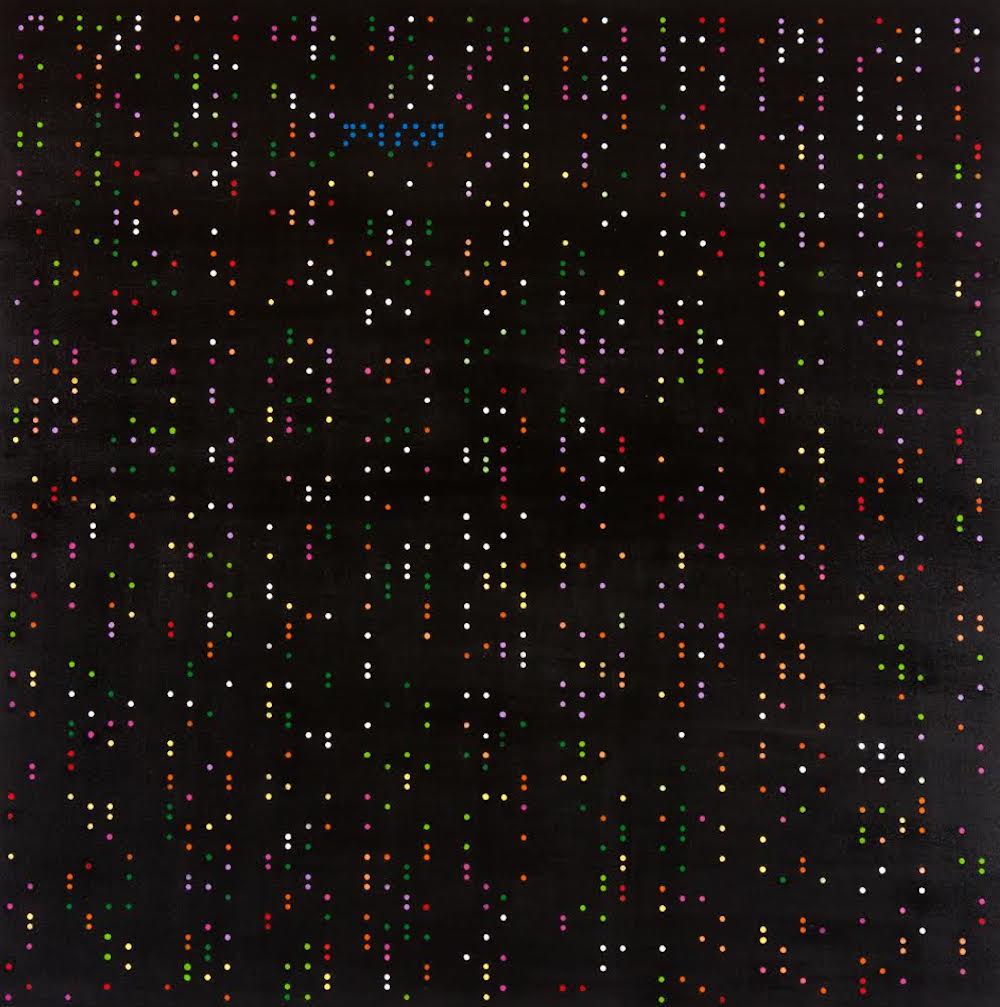
"This is a little bit of a math nerd joke," Saiers told Live Science in reference to this painting, titled "Prime Example of Narcissism." The dots in the painting are Braille representations for all of the prime number between 1 and 10,000. Included in this field of prime numbers is the artist's own name, written in Braille.
"You can't get much more arrogant than sticking yourself in with the prime numbers," Saiers said.
Genocide is Evil
Sign up for the Live Science daily newsletter now
Get the world’s most fascinating discoveries delivered straight to your inbox.
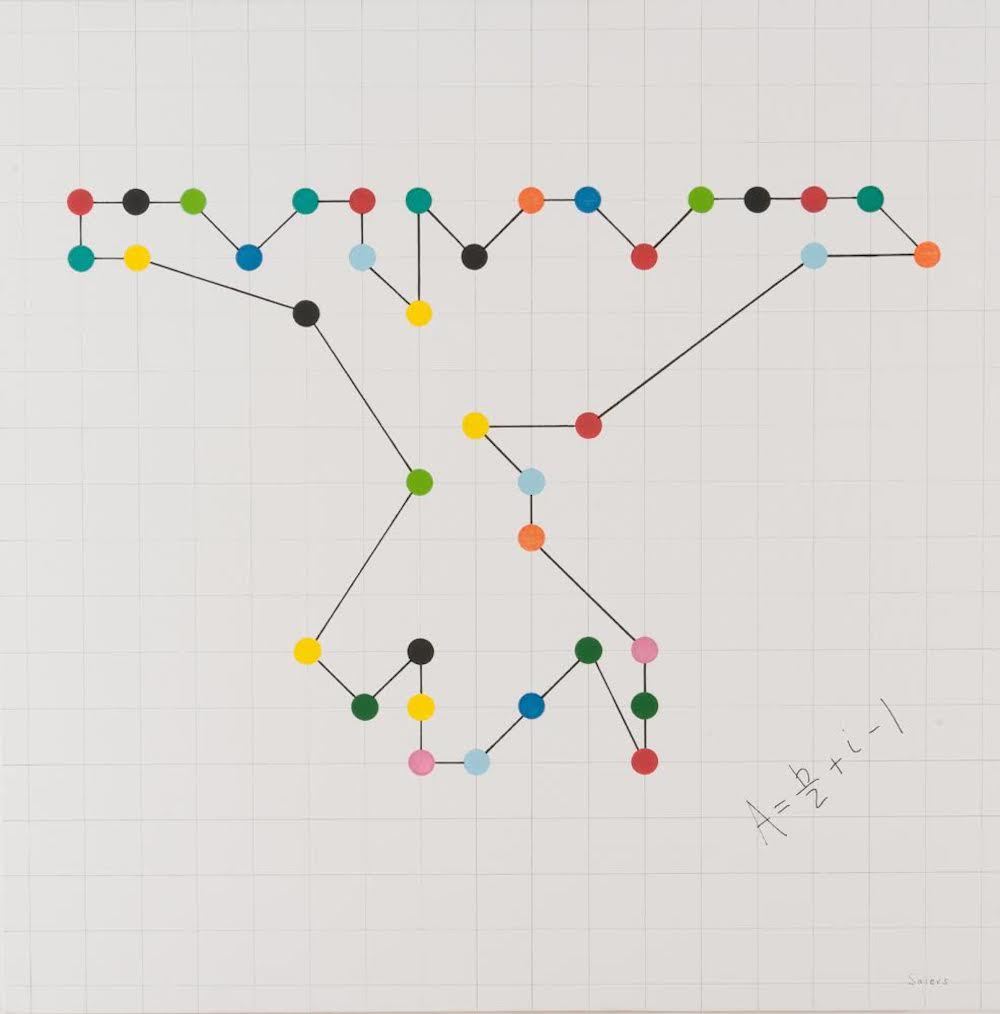
"Genocide is Evil" pays tribute to the Austrian mathematician, George Alexander Pick, who is best known for his formula (shown in the lower right corner of the painting) that determines the area of a lattice, or group of points. The circles in the painting spell out "genocide is evil," in Braille.
"It's depicted in simple colors, almost like how a child might do it. And this is juxtaposed with the equation that Pick derived," Saiers said. The mathematical equation is always true, but so is the moral statement of the painting, he added.
Pick, who introduced Albert Einstein to some of the mathematic principles used in determining the theory of relativity, died in a Nazi concentration camp during World War II.
Ship of Theseus

The title of this painting, "Ship of Theseus," alludes to the myth of the Greek hero Theseus, who sailed around the Mediterranean slaying minotaurs and doing other heroic things, according to Saiers.
"Over time, every single part of his ship was replaced," Saiers said. "The question is, is that the original ship?"
The ship in the painting floats on a bubble full of Braille letters that spell out a quotation from Isaac Newton, which reads, "I can calculate the movement of the stars, but not the madness of men." There are several ways to interpret the painting, but in part, Saiers said the piece is meant to reassure viewers that their confusion about the world lands them in good company.
Goaltending
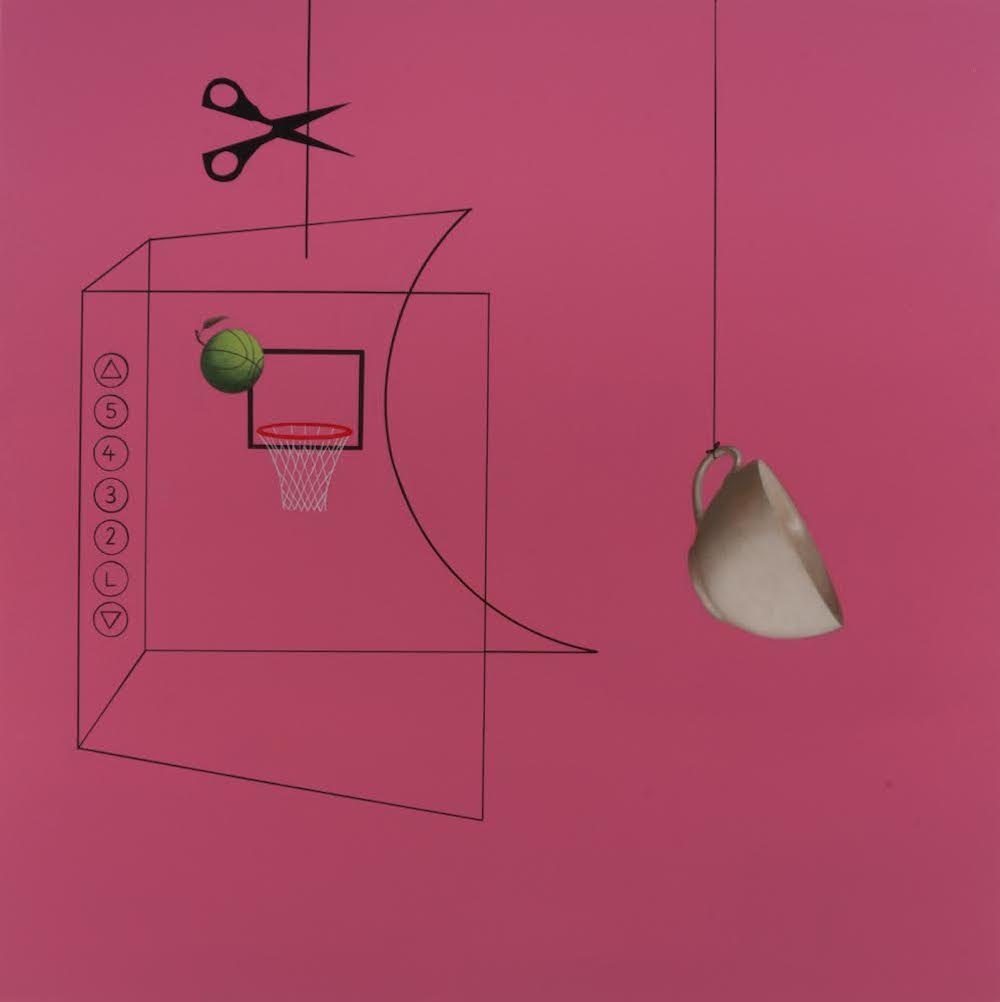
References to Isaac Newton also abound in this painting, called "Goaltending," which depicts a basketball — which looks like an apple — missing the basket. The reason for the miss, Saiers explained, is that the ball, as well as the rest of the basketball court, is in free fall because someone has cut the elevator cable that was holding the court in place.
2overcome
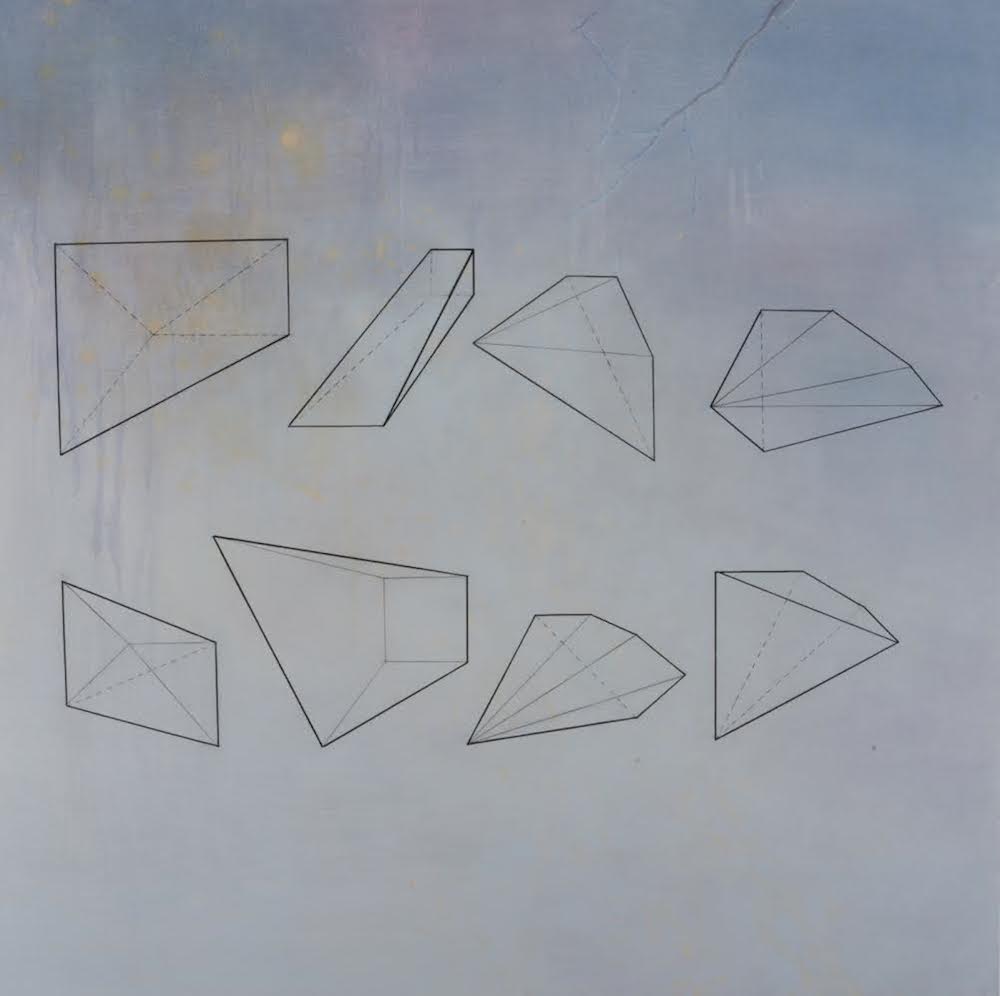
This painting, titled "2overcome," is based on what the artist called "one of the most radical formulas of all time" (2 = v + f – e). The formula states that when you add up the vertices of any complex polyhedron (like the shapes depicted in the painting) and then subtract the edges, you are left with v = 2, no matter how many faces the shape has. The formula "shocked the geometric world," Saiers said.
Leonhard Euler, the 18th century mathematician who came up with the formula, eventually went blind.
"This is about overcoming obstacles. These are simple geometric forms, but if you replace the vertex with a circle in Braille, it would say the words 'overcome, overcome,'" Saiers said.
Tang
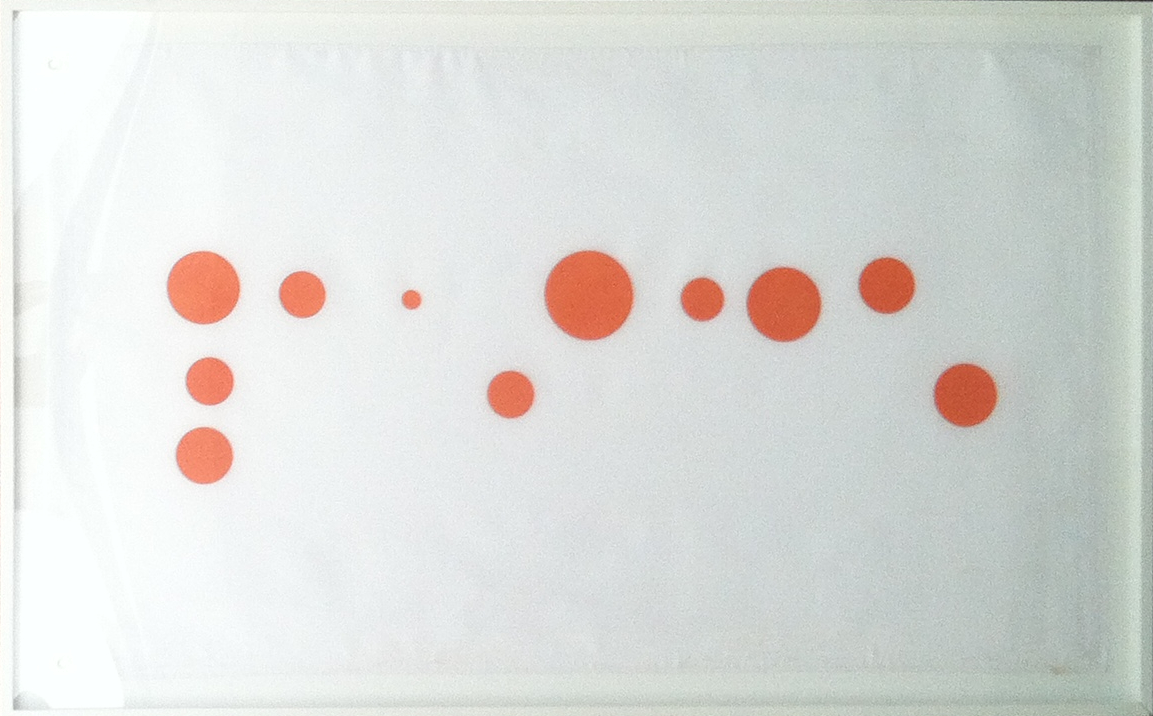
"Tang" features the Braille word for peace. The white flag that holds this simple message is meant to invoke a feeling of surrender, but it was originally inspired by NASA's Apollo 11 mission, when astronauts planted an American flag on the moon, according to Saiers. The flag they planted there in 1969 is believed to have since deteriorated to nothing but white rags, and the flag's color is thought to have been bleached white, thanks to exposure to UV light from the sun, Saiers said.
Follow Elizabeth Palermo @techEpalermo. Follow Live Science @livescience, Facebook & Google+.

Elizabeth is a former Live Science associate editor and current director of audience development at the Chamber of Commerce. She graduated with a bachelor of arts degree from George Washington University. Elizabeth has traveled throughout the Americas, studying political systems and indigenous cultures and teaching English to students of all ages.









